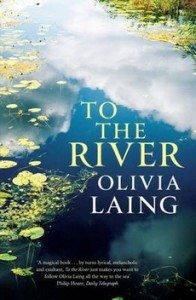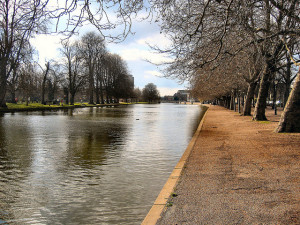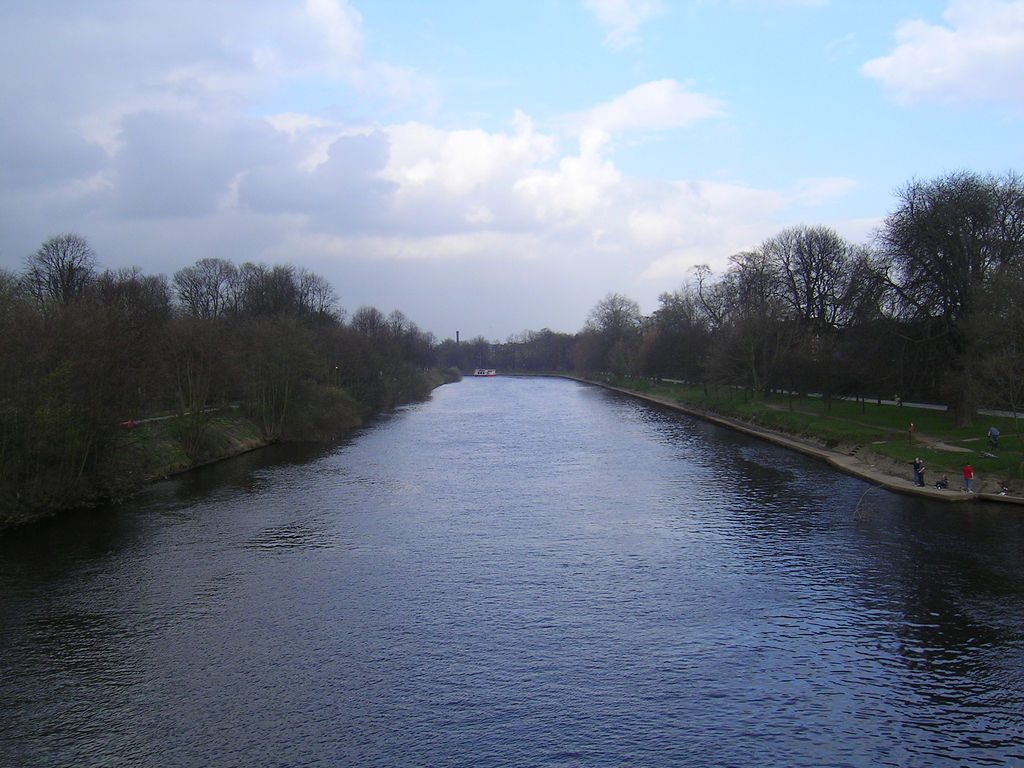To the River by Olivia Laing (Review)
[dropcap]T[/dropcap]he muddy banks of the Sussex delta are imprinted with the vestiges of marching armies – from Simon de Montfort’s troops to the patrol of the lapwings, and from visionary geologists to Leonard Woolf’s tragic sprint down to the river. The impression that hundreds of years of footfall leave on such a canvas can only be read by a skilled eye.
 To The River is a rare translation of a shared history based in and around the blue watermark of England’s southern counties – the river Ouse. Olivia Laing here is our interpreter. Through her ears we hear the coarse indiscretions of locals spouting scandal, and the charming voices given to the chinking wren, slurring woodpigeon, and brooking toad. We too pick apart a brittle owl pellet, sifting the tiny bones with as much eager curiosity as the author herself. We see the baffling proximity of McDonald’s wrappers and dancing dragonflies, we watch the martins “lifting and falling like sifted flour” from within a distastefully decorated hotel interior… Ours is an age of endless contrast.
To The River is a rare translation of a shared history based in and around the blue watermark of England’s southern counties – the river Ouse. Olivia Laing here is our interpreter. Through her ears we hear the coarse indiscretions of locals spouting scandal, and the charming voices given to the chinking wren, slurring woodpigeon, and brooking toad. We too pick apart a brittle owl pellet, sifting the tiny bones with as much eager curiosity as the author herself. We see the baffling proximity of McDonald’s wrappers and dancing dragonflies, we watch the martins “lifting and falling like sifted flour” from within a distastefully decorated hotel interior… Ours is an age of endless contrast.
With To The River, Olivia Laing traces the Ouse from source to mouth through wonderfully illustrative depictions of the verve and vivacity of her natural surroundings. Her narrative breaks off here and there into historical and literary digressions, much as the course of a stream joins countless tributaries on its pilgrimage to the sea. At each confluence, we are dealt a hand of social history, or a flush of her own memories; episodes she relates to the shuffling of a deck of cards.
In the early nineteenth century, Gideon Mantell discovers the relics of the Iguanadon, one of the first dinosaurs, and decades later the bogus Piltdown man is pieced together from ape bones and portions of human skull. A stretch of river later, we rewind to 1264, when the Battle of Lewes is fought on the banks of the Ouse. Another chapter sees Laing as a child, sitting in the back of a broken down car listening to The Wind In The Willows audio tape while nervously watching dark shadows morph into evil weasels and press themselves to the windows. From here we are led to the tragic story of Kenneth Grahame’s own son, purblind, and on a path to self-destruction.
These asides are haunted by Laing’s phantom protagonist
 Virginia Woolf and her inevitable attachment to the Ouse never strays far from the author’s side. Woolf’s morbidly prophetic obsession with the river, immersion and submersion in her own writing is an eerie precursor to the day when she is found by a group of children throwing stones at an old log floating downstream: children who soon realise the ‘log’ is in fact wearing a fur coat and wellington boots… To The River is as much a dissection of Woolf’s own torrid relationship with the river as that of the author’s.
Virginia Woolf and her inevitable attachment to the Ouse never strays far from the author’s side. Woolf’s morbidly prophetic obsession with the river, immersion and submersion in her own writing is an eerie precursor to the day when she is found by a group of children throwing stones at an old log floating downstream: children who soon realise the ‘log’ is in fact wearing a fur coat and wellington boots… To The River is as much a dissection of Woolf’s own torrid relationship with the river as that of the author’s.
There is much shared between Olivia Laing and her angst-ridden muse. At times, Laing seems to despise humanity and the vulgarities spoken too loudly in brutalist car parks. Snippets of overheard conversation frequently wade in and interrupt the beauty of the surroundings we are otherwise immersed in. The book in fact could be seen as decidedly therapeutic. Coming out of a bad break-up herself, Laing’s own depression lingers over the pages like a stormy raincloud that never quite bursts, rendering the air “tense and fidgety”. Amid breath-taking descriptions of kestrels “pinned to the sky” and dragonflies “the size of kitchen matches” there hangs a dark shadow of lonely futility.
“The present, the present. It never stops, no matter how weary you get. It comes unstintingly, as a river does, and if you aren’t careful, you’ll be swept off your feet. I should have warned the woodpigeon.”
The history of the river Ouse is a bloody one, and the banks are littered with the figurative bones of battles fought and lives taken. These darker moments of fascination with bones and death are defused by amusing realities – Laing worries about her toenails, regrets leaving behind her mascara, and sprints through dark avenues of trees, imagining the worst. She is hot and bothered at finding herself muddled and on the wrong path, and has an intense fear of cows.
For Olivia Laing, the past is something that is perpetual and constantly forming under our feet
 Throughout what is essentially a charming but lucid biography of a piece of land, meandering around unearthed stories of old and Laing’s own childhood memories on its path to the sea, there lingers a faint outline of threat, as if to warn of the misfortunes of our ancestors. At the end of Olivia Laing’s week-long midsummer’s journey, the cranes of Newhaven stand silhouetted against the horizon, modern monsters as large as Mantell’s Iguanadon that loom inevitably in the distance. She reminds us that it is we who have tenancy of the beauty of this shared realm, we who must keep it “cauled in water” for the generations to come.
Throughout what is essentially a charming but lucid biography of a piece of land, meandering around unearthed stories of old and Laing’s own childhood memories on its path to the sea, there lingers a faint outline of threat, as if to warn of the misfortunes of our ancestors. At the end of Olivia Laing’s week-long midsummer’s journey, the cranes of Newhaven stand silhouetted against the horizon, modern monsters as large as Mantell’s Iguanadon that loom inevitably in the distance. She reminds us that it is we who have tenancy of the beauty of this shared realm, we who must keep it “cauled in water” for the generations to come.
Woolf saw the past as “an avenue lying behind, a long ribbon of scenes, emotions”, but for Olivia Laing, the past is something that is perpetual and constantly forming under our feet. Despite the human propensity for denouement, for resolution, we know that her journey along the river Ouse can never really end at the sea.
“The past is not behind us but beneath, and the ground we walk on is nothing more than a pit of bones, from which the grass unstinting grows.”
Image Credits: Header (Flickr/Neil Turner), Image 1 (whsmith.co.uk), Image 2 (Flickr/Osbornb), Image 3 (Flickr/Ronald Saunders).

Comments